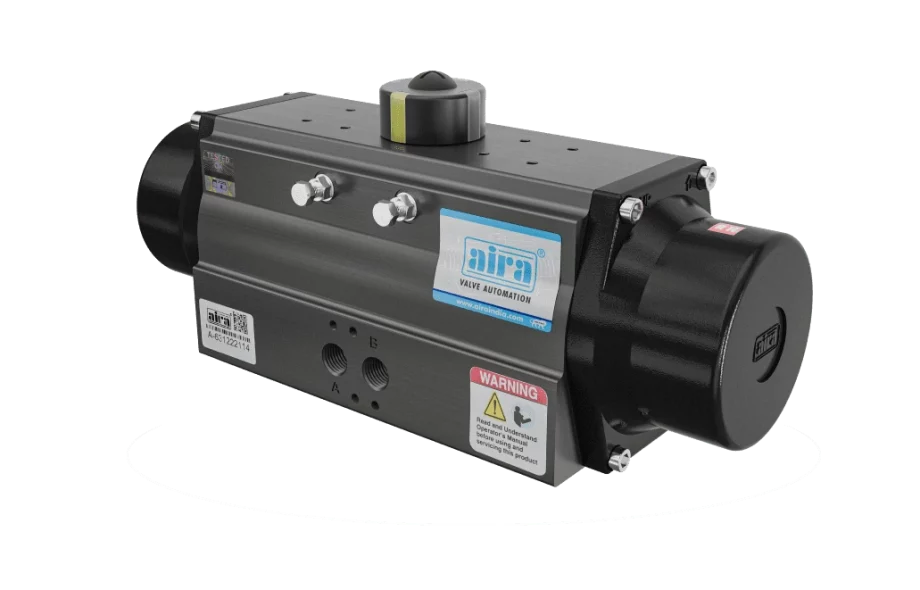Pneumatic actuators play a vital role in modern industrial automation systems. These mechanical devices convert compressed air into motion, offering a clean, efficient, and reliable solution for a variety of applications. They are widely used in industries such as manufacturing, oil and gas, chemical processing, food and beverage, and water treatment. This article explores the common types of pneumatic actuators and their practical applications in different sectors.
Single-Acting Pneumatic Actuators
Single-acting actuators use air pressure to move in one direction, with a spring mechanism returning the actuator to its original position when the air supply is removed. These actuators are ideal for applications where a fail-safe mechanism is required. For instance, in emergency shut-off valves, a single-acting pneumatic actuator ensures that the valve automatically returns to a safe position during a power or air failure. Their simplicity and cost-effectiveness make them a popular choice in low-cycle operations.
Double-Acting Pneumatic Actuators
Double-acting pneumatic actuators, as opposed to single-acting versions, employ air pressure to open and close in both directions.This type provides more control and is commonly used in applications requiring high force and frequent cycling. Double-acting actuators are preferred in automated process systems where speed and precision are essential, such as in bottling plants, assembly lines, and packaging units. Their ability to operate smoothly in both directions makes them suitable for complex motion control tasks.
Rotary Pneumatic Actuators
Rotary pneumatic actuators use pressurised air to produce rotational motion. These actuators are commonly used in applications that require turning or rotating movements. They can be found in butterfly valves and ball valves, which require a quarter-turn to open or close. Rotary actuators come in both rack-and-pinion and vane forms. They are favored in industries that require quick and repeatable rotary motion, such as in robotics and material handling systems.
Linear Pneumatic Actuators
Linear pneumatic actuators generate straight-line motion, either pushing or pulling depending on the system setup. These are one of the most commonly used actuators in industrial automation. They are found in machine tools, conveyors, and lifting mechanisms. Linear actuators are particularly beneficial in assembly operations and equipment that require precise movement of parts or tools. Their durability and efficiency under repetitive tasks make them indispensable in many manufacturing environments.
Rodless Pneumatic Actuators
Rodless pneumatic actuators offer linear motion similar to traditional linear actuators, but without an external rod extending from the cylinder. Instead, they use an internal carriage that moves along the cylinder body, providing a compact solution where space is limited. These actuators are frequently utilised in the printing, packaging, and semiconductor industries, where lengthy strokes are required but exterior space is limited. Their clean and enclosed design also reduces the risk of contamination, making them suitable for cleanroom applications.
Diaphragm Pneumatic Actuators
Diaphragm actuators are a specialized type often used in control valve applications. They operate using a flexible diaphragm that moves in response to air pressure. These actuators are excellent for precise control tasks where small movement and high accuracy are needed. They are commonly used in industries dealing with gases or hazardous fluids, where controlled flow is crucial. Diaphragm actuators offer high sensitivity and smooth operation, making them ideal for regulating pressure and flow rates.
Applications of Pneumatic Actuators
Pneumatic actuators are used across a wide range of industries due to their versatility, speed, and reliability. In manufacturing, they handle repetitive tasks such as pressing, clamping, lifting, and positioning. They operate valves and dampers in pipelines and reactors in process sectors such as oil and gas. The food and beverage industry uses pneumatic actuator systems for packaging, bottling, and automated sorting due to their hygienic operation and ease of maintenance. In the pharmaceutical sector, pneumatic actuators contribute to sterile and precise operations.
Conclusion
Pneumatic actuators are fundamental components in industrial automation, offering efficient motion control through the power of compressed air. Understanding the different types—single-acting, double-acting, rotary, linear, rodless, and diaphragm—helps in selecting the right actuator for specific tasks. Their wide application across various industries highlights their importance in maintaining speed, safety, and reliability in automated systems. With the right pneumatic actuator, industries can achieve improved performance, reduced downtime, and higher productivity.

